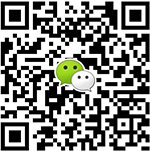英国护理学论文代写:婴幼儿运动阶段
Keywords:英国护理学论文代写:婴幼儿运动阶段

最初阶段是婴幼儿的感觉运动阶段。这一时期的特点是与环境互动的基础上,儿童接受感官输入和肌肉反应。这一时期的任务是发展物体永久性的概念,即物体即使在看不见或听不见的时候仍然存在。(布鲁尔,2001)。前运算期(2 - 7年)是指儿童通过模仿、符号游戏、绘画、心理意象和口语来表现物体和知识的时期。缺乏保护技能也是这个阶段的特点。守恒的定义是,物体的数量、质量、面积、长度、重量和体积不会因为物体的物理位置的改变而改变。(布鲁尔,2001:46)年龄在7岁到11岁或12岁之间属于具体操作时期。这个年龄的孩子开始思考更多的操作。Piaget和Inhelder(1969)将操作思考者描述为在解决问题时使用“通过反转或互反的同一性或可逆性”(99)的人。他们不再以自我为中心,而是认为其他人可能会得出与自己不同的结论。
英国护理学论文代写:婴幼儿运动阶段
The initial stage is the Sensorimotor Stage of babies and toddlers. This period is characterized by interactions with the environment based on the child’s reception of sensory input and muscular reactions. The task of this period is to develop the concept of object permanence, the idea that objects exist even when they cannot be seen or heard. (Brewer, 2001). The Preoperational Period (two to seven years) marks the time when a child becomes able to represent objects and knowledge through imitation, symbolic play, drawing, mental images and spoken language. Lack of conservation skills is also characteristic of this stage. “Conservation is defined as the knowledge that the number, mass, area, length, weight, and volume of objects are not changed by physically rearranging the objects.” (Brewer, 2001: 46) The ages of seven to eleven or twelve years falls under the Concrete Operational Period. Children at this age begin to think more operationally. Piaget and Inhelder (1969) described the operational thinker as one who employs “identity or reversibility by inversion or reciprocity” (99) in solving problems. They have moved on from being egocentric and consider that others may come to conclusions that differ from theirs.


